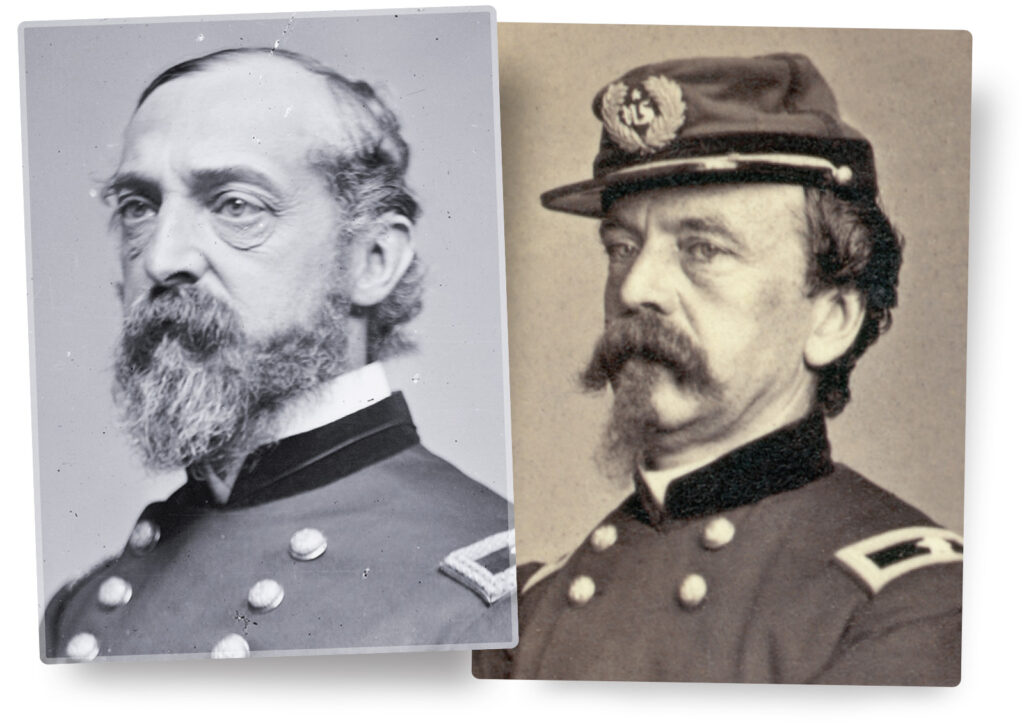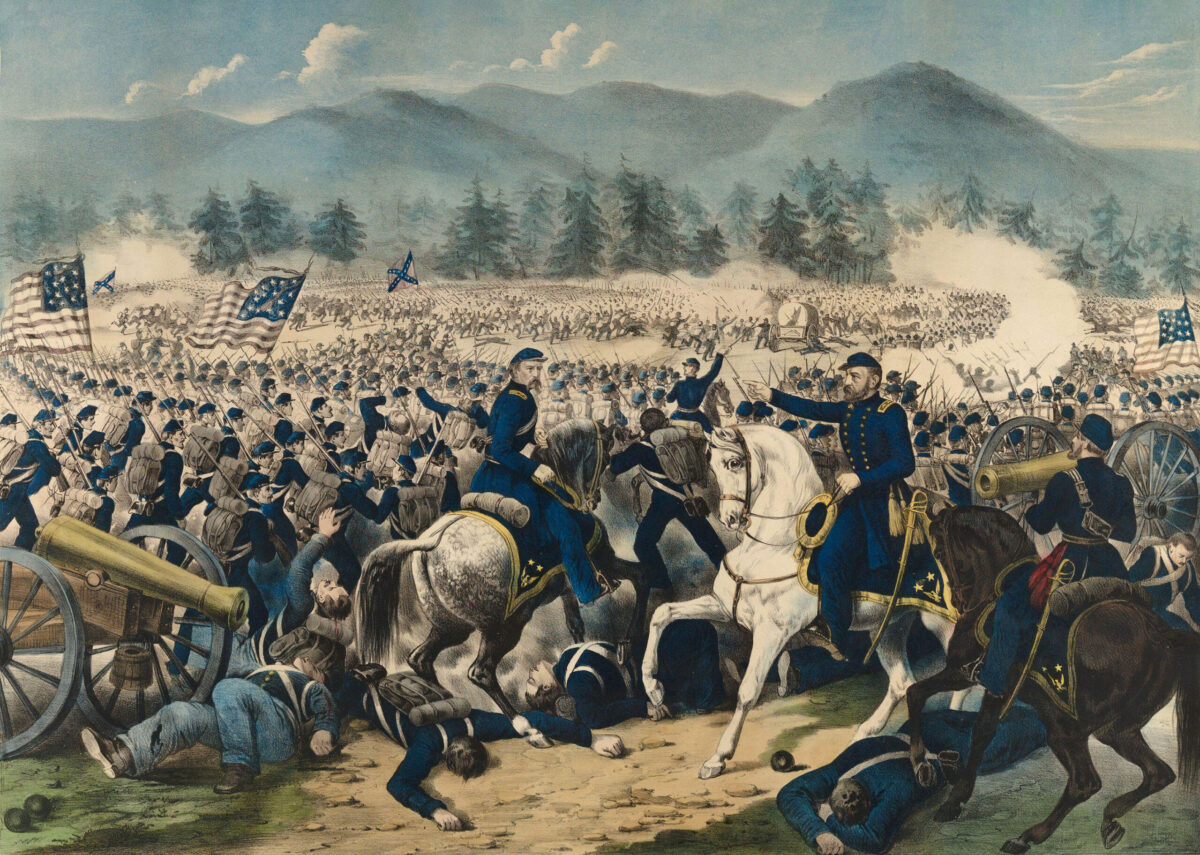“It was either a good line, or a bad one, and, whichever it was, I took it on my own responsibility….I took up that line because it enabled me to hold commanding ground, which, if the enemy had been allowed to take—as they would have taken it if I had not occupied it in force—would have rendered our position on the left untenable; and, in my judgment, would have turned the fortunes of the day hopelessly against us.” So testified Union Maj. Gen. Daniel E. Sickles on February 26, 1864, to the Joint Congressional Committee on the Conduct of the War about the controversial decision he made, against orders, to reposition his 3rd Corps at Gettysburg on July 2, 1863.
As a politician, Sickles understood the importance of getting out in front of a story and shaping how it was perceived. In his view, had he not moved his corps to its advanced position, the battle likely would have been lost—a narrative he pushed on more than one front. Sickles, whose left leg was shattered by a cannonball and amputated during that day’s fighting, eagerly shared his version of the battle with President Abraham Lincoln while recovering from his wound, as well as anyone else in Congress he thought might be of help, particularly those who served on the Conduct of the War committee.
It was no accident Sickles was the first officer to testify before the committee about Gettysburg. In March 1864, he was likely the author, or at least the source, of an article about the battle in The New York Herald, under the pen name “Historicus,” which essentially repeated Sickles’ points from his testimony before the committee.
At the time, Sickles was unsuccessful in his effort to have Maj. Gen. George Meade removed as commander of the Army of the Potomac and for his personal return to the army, which Meade had blocked. But he was successful in muddying the waters of truth and in casting doubt upon Meade’s generalship at Gettysburg. This has echoed through the decades to today, where people still fiercely debate the wisdom or folly of Sickles’ advance, and view Meade’s generalship through the lens Dan Sickles shaped.

In considering the position Sickles occupied and the one Meade ordered him to be in, it is worth pausing a moment to consider the two men’s military pedigree, for in this area they were not equals. Sickles had no antebellum military experience. He was commissioned a colonel on June 26, 1861, principally because he was a well-known Democrat who supported the war and could assist in the raising of troops.
Sickles’ nomination to brigadier general in September 1861 was held up for months, and although he had command of a brigade, when it shipped out for the 1862 Peninsula Campaign, he remained in Washington to fight the political battles needed to secure that promotion. He succeeded but missed the key Battle of Williamsburg, although he was with the brigade at Fair Oaks (Seven Pines) on May 31–June 1, 1862.
Sickles saw further action during the Seven Days’ Battles starting in late June, but then returned home on a recruiting mission, which resulted in him missing both the Second Bull Run and Antietam campaigns.
When Maj. Gen. Ambrose Burnside assumed command of the Army of the Potomac in November 1862, Sickles was bizarrely placed in command of the 3rd Corps’ 2nd Division despite his lack of military training and combat experience. His division was lightly engaged at Fredericksburg, however, suffering only about 100 casualties.
Then, in yet another questionable military decision, Maj. Gen. Joseph Hooker handed Sickles command of the 3rd Corps upon replacing Burnside atop the Army of the Potomac in January 1863.
In describing the general’s performance at the Battle of Chancellorsville in May, Sickles’ biographer, James Hessler, wrote: “[H]e fought aggressively, but demonstrated questionable military judgment.” Shortly after that battle, Sickles left the army again, claiming a shell burst had damaged his health. He did not return until June 28, the day Meade replaced Hooker as the army’s commander.
There is no question Sickles was a brave soldier, but he was a corps commander with relatively little experience who had demonstrated no aptitude to read terrain well. Meade, on the other hand, was a West Pointer with 28 years’ service in the Army, including as a topographical engineer during the Mexican War, where his job was to read terrain. Meade had commanded, with great skill, units from brigade to corps in the Army of the Potomac in every major battle in the Eastern Theater.
When Meade decided where to place each of his corps on July 2, he relied on an early morning reconnaissance he had conducted. Meade sent verbal orders to Sickles early, probably about 5–5:30 a.m., to relieve a 12th Corps division on the northern slope of Little Round Top and to extend his right to connect with the 2nd Corps. Sickles never visited Little Round Top that we know of, and he would later claim the 12th Corps division had no defined position, which was untrue, for some of his troops did in fact spell relief for part of the 12th Corps command.
At 11 a.m., after riding to Meade’s headquarters, Sickles told his commander he was unsure of the position he had been ordered to occupy. Meade reiterated “that his right was to rest upon General [Winfield S.] Hancock’s left; and his left was to extend to the Round Top mountain, plainly visible, if it was practicable to occupy it.”
What then of the advanced position to which Sickles subsequently moved without orders? The reasons why Meade had not deployed the 3rd Corps here soon became abundantly clear for several reasons: 1) the advanced position upset the defensive arrangement of the army commander; 2) it was beyond support distance of the 2nd Corps, or any of the army’s other corps; 3) Sickles did not have enough men to assume the front he chose; 4) he left Little Round Top, the key terrain on the southern end of the field, undefended; 5) the salient at the Peach Orchard was easily hit by a crossfire of Confederate artillery; 6) if the 3rd Corps was driven from its position, it would have to retreat over open ground, likely leading to heavy casualties; and 7) contrary to Sickles’ claim, Meade’s assigned position for the 3rd Corps was a superior one.
To answer Sickles’ rhetorical question of whether his line was a good or bad one: no, it was bad—and it nearly led to the army’s defeat. Colonel E. Porter Alexander was one Confederate certain the battle was won when he placed his guns in the Peach Orchard, with the 3rd Corps driven back. But “when I got to take in all the topography, I was very much disappointed,” he recalled. “It was not the enemy’s main line we had broken. That loomed up near 1,000 yards beyond us, a ridge giving good cover behind it & endless fine positions for batteries.”
It was the original position Meade had assigned Sickles to defend.
Scott Hartwig writes from the crossroads of Gettysburg.
This article originally appeared in the Spring 2024 issue of America’s Civil War magazine.





